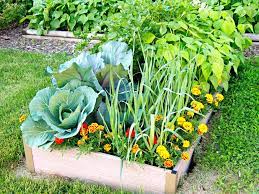Vegetable indoor plants - the best-known
Categories: Home Decor

You experience a fantastic sense of tranquility when you are growing a plant. You have access to a wide selection of vegetable plants, particularly when gardening indoors. There are several veggies that are quite simple to cultivate inside in your own yard.
The advantages of this type of indoor gardening are numerous. This kind of cultivating gives you new food notwithstanding vegetation for the tasteful allure of your home. The best indoor vegetables for one's nursery are remembered for the article beneath.
Utilizing indoor fertilized soil or preparing blend, you can successfully develop plants inside in a warmed carport or on an edge. Your life as an indoor grower can be made easier with grow lights. Here, we've attempted to highlight a few advantages of indoor gardening to better explain the subject.
Spring onions
Indoor spring onion growing is possible without growth lights. Make sure kids have access to windows or at least a couple of hours of filtered light each day.
They don't require a lot of room either. After the annuals fade in the fall, you can plant them in any extra pots you may have. Just be sure to give the pots a good cleaning and replace the soil before placing them. After you've eaten the green top of spring onion, transplant the remaining root end to grow new ones.
Eggplant, tomato, and peppers
These fruiting plants consume a lot of food. Window sills are inadequate and could become uncomfortably cold at night. These plants are best suited for large indoor pots or a hydroponic system because they require heat and a lot of root space to blossom and produce fruit.
Garlic green
The following time you see a growing garlic bulb, make sure to it in a pot, give it some water, and set it on a table or windowsill near a window.
You can pick a garlic green to place in plates of mixed greens, soups, or stews half a month after the fact. Once the green has grown to about 8 inches, harvest it. Just cut what you need. This method of growing garlic sprouts results in a gradual deterioration in quality. To ensure a steady supply of fresh garlic throughout the winter, you might wish to keep planting new bulbs.
Radishes
For greenhouses, radishes make a superb winter crop. They may always be grown inside in containers. Radishes don't need a great deal of light, nor are they particular about the temperature. They can foster in as short as five weeks, however on the off chance that you pack them into a little pot, they will not develop well.
When growing radishes, longer, rectangular pots like those for windowsill flower displays are frequently preferable. You won't likely group them together in these containers.
Sprouts
In addition to other things, you can develop sprouts from mung beans, lentils.
For every sort of fledgling you wish to develop, you'll require a container with a punctured top. Place the beans or different vegetables in various containers. Allow them to sit in water that covers them, though by a hair, while permitting them to sprout under standard light. They won't should be presented to guide daylight to thrive.
Something like one time each day, flush the fledglings and supplant the water in the containers.
Kale, Chard, & Spinach
All three of these plants are brassicas. They are a little bit more needy despite having identical growing requirements to lettuce. In addition to being more pest-attractive than other plants, brassicas are vulnerable to nematodes that can cause problems with the roots.
Before planting these greens, elevate the pH of your growing media to roughly 7 using lime or a similar pH-adjusting ingredient. And continue fertilizing them! Brassicas are very nutrient-dense, however, this is only because they consume a lot of food while they are growing.
Carrot
Carrots are another dependable crop you can produce indoors; they are sweet, crisp, and loaded with healthy vitamins and minerals. Carrots require temperatures between 15 and 16 degrees Celsius and at least 12 hours of light per day.
Use a pot or container that is 8–12 inches deep, depending on the type of carrots you select. Carrots may not develop correctly if they are not planted in deep soil. Don't cram them together either; they need a lot of room to grow correctly. Pick a cultivar that grows quickly so you can harvest the carrots before winter is over.
Benefits of indoor gardening
- Pesticide free
- Loved by kids and knowledge gaining.
- 0Gardening heals the soul
- Saves money
- Provides better taste and is healthy.
Bottom line
I hope you received the healthiest indoor plants possible. Everybody should incorporate gardening into their daily routine since it strengthens ties to the environment and renews and enlivens the spirit. Therobustlifestyle is always intended to fulfill a need.